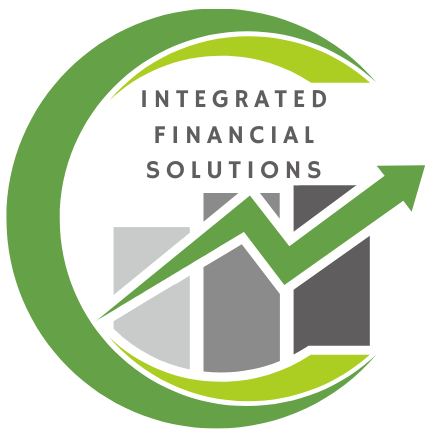Imagine this: It’s Monday morning, you’re staring at half a dozen spreadsheets, your inbox is full of outdated reports, and you’re trying to figure out if you have enough cash to meet payroll. Sound familiar?
If you’ve ever felt like you’re flying blind with your finances, you’re not alone. Most business owners waste hours chasing numbers—only to discover they’ve missed critical insights that could’ve driven growth.
What if you could see your most important financial metrics at a glance? What if you had a real‑time pulse on revenue, cash flow, and profitability, so you never had to scramble at month‑end again?
That’s the power of a financial dashboard done right. Let’s break down exactly how to build one that’s not just a pretty chart—one that actually helps you grow.
Who This Is For
- Founders and CEOs who want crystal‑clear visibility into their company’s health
- Finance leaders tired of manual reporting and data errors
- Small business owners ready to scale with confidence
- Entrepreneurs juggling multiple revenue streams and cash‑flow demands
If you’re spending too much time on spreadsheets and not enough time on strategy, this guide is for you.
What Is a Financial Dashboard?
A financial dashboard is a real‑time visual display of your key business metrics. Instead of digging through raw data, you see:
- Revenue trends
- Profit margins
- Cash‑flow forecasts
- Expense breakdowns
- Budget vs. actual performance
All in one place. Think of it as your business’s cockpit, where every gauge tells you exactly where to steer next.
Why You Need One Now
- Instant Insights
Stop waiting for month‑end close. See revenue and expenses updated daily—so you can act fast. - Data‑Driven Decisions
Know which product lines, services, or marketing channels are really profitable. - Risk Reduction
Spot cash‑flow crunches before they become crises—avoid late payroll or missed vendor payments. - Growth Acceleration
Identify opportunities to reinvest, hire, or expand—backed by real numbers, not gut feeling.
Step 1: Choose Your Key Metrics
Every dashboard starts with the right data. Your list will vary, but at minimum include:
- Monthly Recurring Revenue (MRR) or total sales
- Gross Profit Margin (Revenue – Cost of Goods Sold ÷ Revenue)
- Cash‑On‑Hand and Burn Rate
- Operating Expenses by category (payroll, marketing, rent)
- Budget vs. Actual variance
- Customer Acquisition Cost (CAC)
- Customer Lifetime Value (CLV)
Pick no more than 7–10 metrics to avoid information overload.
Step 2: Pick the Right Tool
You don’t need a PhD in data science—just a tool that connects to your accounting software and updates automatically. Popular options include:
- Google Data Studio (free, flexible)
- Microsoft Power BI (robust analytics)
- Tableau (enterprise‑grade visuals)
Choose one that:
- Integrates with your bookkeeping software (QuickBooks, Xero, etc.)
- Lets you set up automated data refreshes
- Offers drag‑and‑drop charting for easy customization
Step 3: Design for Clarity
A dashboard should be scannable in under a minute. Use:
- Line charts for trends (revenue over time)
- Bar charts for comparisons (expense categories)
- Gauge charts for goals (cash‑on‑hand threshold)
- Traffic‑light indicators (green/yellow/red) for variance alerts
Group related metrics together—top row for income, middle for expenses, bottom for cash‑flow and profitability. Keep colors consistent and text labels clear.
Step 4: Automate Data Collection
Manual exports are a recipe for errors. Automate:
- Daily updates from your accounting system
- Auto‑ingest of bank feeds for real‑time cash balances
- Scheduled alerts when metrics cross thresholds (e.g., burn rate > 20% of cash reserves)
Automation saves you time and ensures you never miss a critical data point.
Step 5: Use It to Drive Growth
Building the dashboard is only half the battle—using it is where the value lives.
- Weekly Reviews: Block 15 minutes each Monday to scan your dashboard for red flags.
- Quarterly Strategy Sessions: Update forecasts and budgets based on dashboard insights.
- Team Alignment: Share the dashboard with department heads so everyone understands the big picture.
When your team sees the same metrics you do, they can act on them—whether that’s cutting costs, ramping up marketing spend, or hiring new talent.
Common Pitfalls to Avoid
❌ Too Many Metrics: If you need a manual to read it, simplify.
❌ Outdated Data: If it’s not automated, it’s not real‑time.
❌ Overdesign: Fancy visuals are great—but clarity trumps all.
❌ Neglecting Context: Always pair numbers with a brief note (e.g., “Q2 marketing campaign launched May 5”).
Ready to Build Your Growth Engine?
A real‑time financial dashboard isn’t a luxury—it’s the foundation of strategic growth. It turns raw numbers into actionable insights, reduces risk, and gives you the confidence to scale.
At Integrated Financial Solutions, we help businesses just like yours set up automated dashboards, choose the right metrics, and translate insights into growth.
If you’re ready to stop flying blind and start steering your business with precision, let’s chat. We’ll guide you step‑by‑step to a dashboard that drives real results.
Contact us today for a free consultation!

